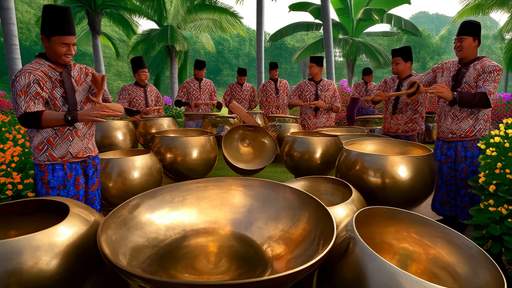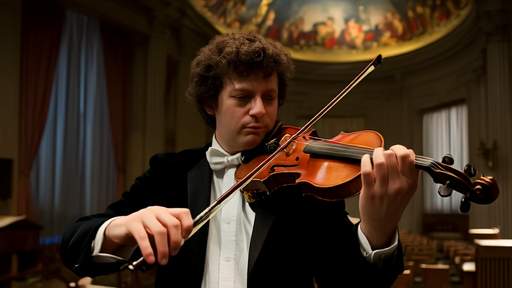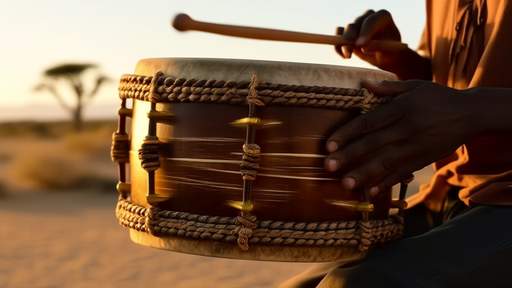The resonant gongs of the gamelan orchestra have echoed across Java and Bali for over a millennium, their bronze voices carrying whispers of a sophisticated metallurgical tradition rooted in Southeast Asia’s Bronze Age. More than mere musical instruments, these ornate ensembles represent a living archaeological artifact—a sonic bridge connecting contemporary performance traditions with the ancient mastery of metal that flourished in the Indonesian archipelago long before European contact.
Forged from bronze alloys of tin and copper, gamelan instruments embody a material alchemy perfected by pre-colonial smiths. The shimmering gangsa metallophones, suspended kempul gongs, and booming gong ageng reveal an intimate understanding of acoustic physics encoded in their dimensions. Unlike the standardized tuning of Western instruments, each gamelan set possesses a unique tonal personality, its intervals reflecting the microtonal nuances of the slendro and pelog tuning systems. This aural fingerprint emerges from the deliberate imperfections of hand-cast bronze—a testament to artisans who balanced metallurgical precision with organic variation.
Archaeological finds from the Dong Son culture (500 BCE–300 CE) suggest the gamelan’s technological lineage stretches back to Vietnam’s Bronze Age drum-makers, whose migrations spread metallurgical knowledge across maritime Southeast Asia. The Majapahit Empire (1293–1527 CE) later elevated bronze casting to new heights, as evidenced by the Moon of Pejeng—a two-meter-wide ceremonial kettle drum displayed in Bali’s Pura Penataran Sasih. These ancient artifacts share the same lost-wax casting techniques still employed by modern gamelan craftsmen in villages like Batur, Central Java, where furnace temperatures reach 1,200°C to pour molten bronze into molds carved from water buffalo horn.
The spiritual dimensions of gamelan metallurgy permeate every stage of creation. Balinese pande (metalworkers) undergo ritual purification before forging sacred instruments, chanting mantras to invite the Hindu god Brahma’s creative energy. Javanese lore speaks of the mythical Empu Supo, a 14th-century blacksmith who received divine inspiration to cast the first gamelan after hearing celestial harmonies. This sacred connection manifests in the gamelan sekaten ensembles played during Islamic holy days in Yogyakarta—their resonant tones believed to carry prayers heavenward.
Modern materials science has only recently decoded the acoustic brilliance behind these ancient instruments. X-ray fluorescence studies reveal that premium Javanese gamelans contain 20–30% tin, a ratio that optimizes both durability and timbre. The blackened kembang goyang decorations adorning royal gamelans aren’t mere ornamentation—they’re carbon deposits from controlled oxidation, a process that subtly alters vibrational properties. Researchers at Surakarta’s Institut Seni Indonesia discovered that the distinctive ombak (wave) effect in paired instruments stems from deliberate 5–10 Hz frequency offsets, creating psychoacoustic pulsations that induce trance states in ceremonial contexts.
As UNESCO considers adding gamelan culture to its Intangible Cultural Heritage list, contemporary musicians are pushing boundaries while honoring tradition. Experimental ensembles like Gamelan Elektrika fuse bronze keys with synthesizers, while conservationists digitally archive rare gamelan gadhon compositions from the Surakarta palace. Yet in workshops across Bali, artisans still smelt bronze ingots using coconut-shell charcoal, just as their ancestors did when the Majapahit empire ruled the archipelago—proving that some harmonies truly are timeless.
From ritual ceremonies to avant-garde concert halls, the gamelan’s enduring voice carries the accumulated wisdom of generations. Each strike of the tabuh mallet releases vibrations shaped by a thousand years of metallurgical innovation—a resonant reminder that Southeast Asia’s Bronze Age never truly ended, but rather transformed into living art. As scholars continue unraveling the sophisticated material science behind these instruments, one truth remains clear: the gamelan stands as perhaps humanity’s most eloquent fusion of elemental earth and transcendent sound.

By /Jun 6, 2025

By /Jun 6, 2025

By /Jun 6, 2025

By /Jun 6, 2025

By /Jun 6, 2025

By /Jun 6, 2025

By /Jun 6, 2025

By /Jun 6, 2025

By /Jun 6, 2025

By /Jun 6, 2025

By /Jun 6, 2025

By /Jun 6, 2025

By /Jun 6, 2025

By /Jun 6, 2025

By /Jun 6, 2025

By /Jun 6, 2025

By /Jun 6, 2025

By /Jun 6, 2025

By /Jun 6, 2025

By /Jun 6, 2025